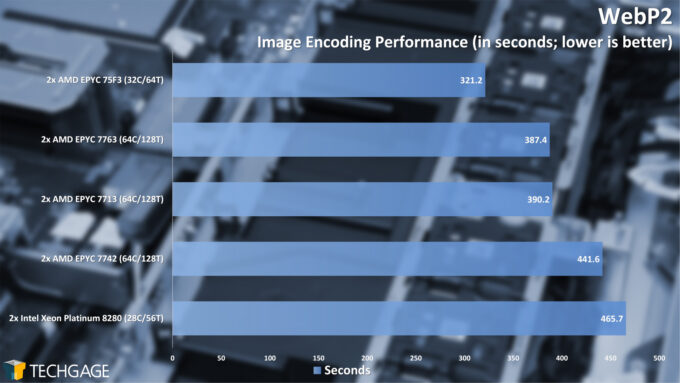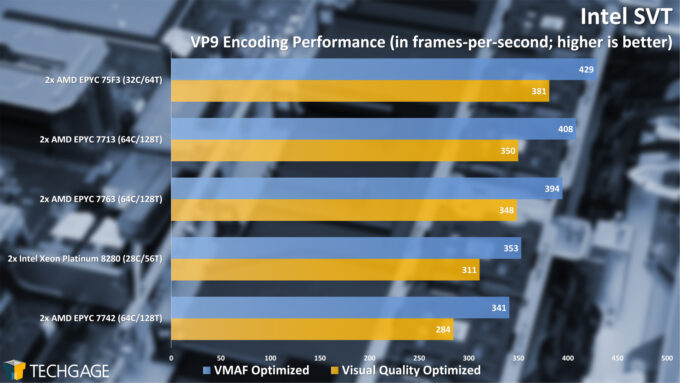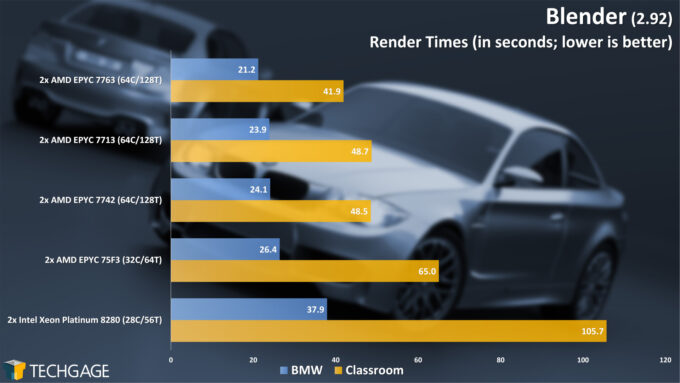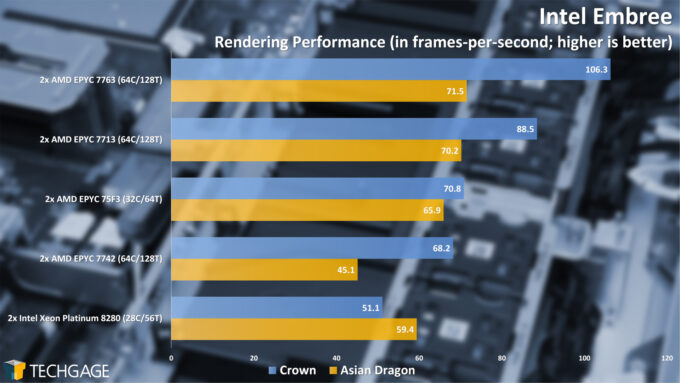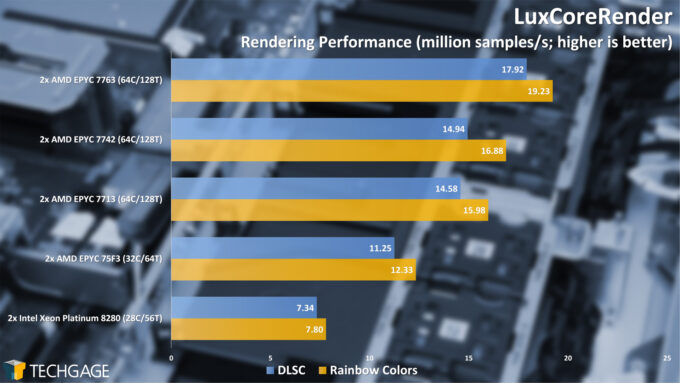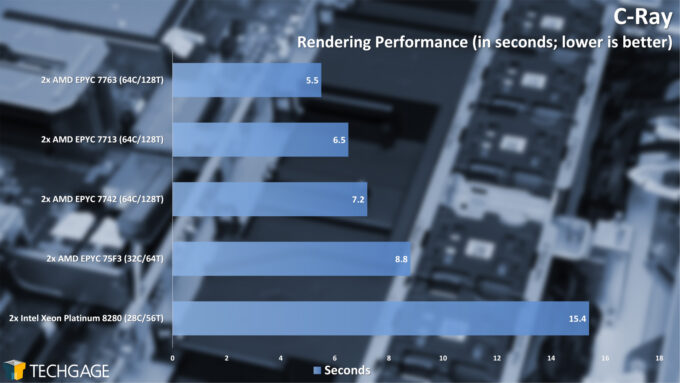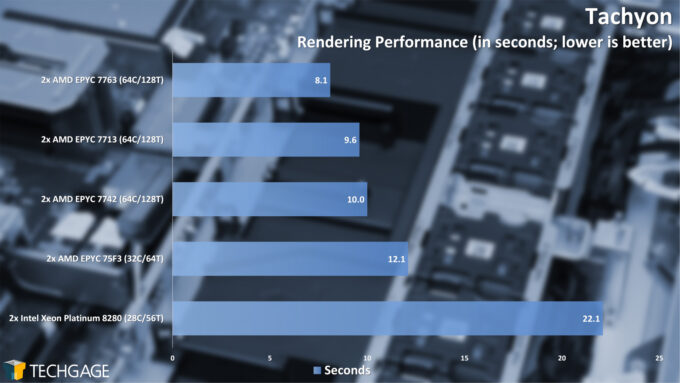- Qualcomm Launches Snapdragon 4 Gen 2 Mobile Platform
- AMD Launches Ryzen PRO 7000 Series Mobile & Desktop Platform
- Intel Launches Sleek Single-Slot Arc Pro A60 Workstation Graphics Card
- NVIDIA Announces Latest Ada Lovelace Additions: GeForce RTX 4060 Ti & RTX 4060
- Maxon Redshift With AMD Radeon GPU Rendering Support Now Available
From Rome To Milan: AMD’s Zen 3 EPYC 7003 CPUs Performance Tested
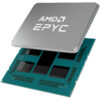
AMD has just launched its third generation EPYC server processor series, also known as Milan. This EPYC update brings AMD’s Zen 3 architecture to the data center, with its improved efficiency, faster performance, and bolstered security. With some of the new chips in-hand, we’re going to explore how AMD’s latest chips handle our most demanding workloads.
Page 3 – Image/Video Encoding & Scientific Performance
We’re going to be tackling both video encoding and rendering performance on this page, and while that sounds like only two things, the reality is that there are a countless number of workloads available in each one, with loads of opportunity to see interesting scaling.
On the encoding front, we’re taking a look at both WebP2 image encoding (yes – that’s the successor to WebP, and not a typo), while Intel’s SVT video encoder is used to crunch some VP9.
Encoding Performance
Encoding is a strange beast, especially for many-core chips. In order for so many cores to actually enjoy an improved encoding performance, the jobs need to be properly parallelized. This is a grand feat, and plays out a lot better with a solution like SVT than with consumer products.
Both of these video and image encoding graphs paint a similar picture. In these particular workloads, the faster clock speeds of the 75F3 32-core parts is enough to push themselves ahead of the dual 64-core parts. As usual, it always pays to understand your workload. While the 7713 sits ahead of the 7763 here, we chalk it up to normal benchmark variance. The SVT test is one where Intel’s last-gen 8280 managed to inch past the last-gen EPYC 7742.
Rendering Performance
Chips like the super-fast 75F3 may see themselves leapfrog the higher core count chips in certain workloads, but rendering certainly isn’t one of those. Rendering will take advantage of as much CPU horsepower as you can deliver, so while higher clocks may help in some cases, the additional cores are going to make an even more notable improvement.
In all cases here, the new top-end EPYC 7763 is pegged to the top of the charts, with it distancing itself a fair bit from the last-gen 7742. While Intel showed some strength in the SVT test to not place last, rendering proves too much. Cores matter, and the more you have, the better. In the event that two CPUs have the same number of cores, then chances are the faster clocks will help the new chips prevail.
In another example of where not all workloads are alike, Intel’s Xeon Platinum actually scaled both Embree projects differently than the AMD chips did, proving stronger in the Asian Dragon test over the Crown one. Either way, those chips are still beat out by AMD’s latest 32-core 75F3 in both instances.
Support our efforts! With ad revenue at an all-time low for written websites, we're relying more than ever on reader support to help us continue putting so much effort into this type of content. You can support us by becoming a Patron, or by using our Amazon shopping affiliate links listed through our articles. Thanks for your support!




